Zotac ZBOX CI320 nano Review: A Fanless Bay Trail-M mini-PC
by Ganesh T S on January 6, 2015 10:00 AM ESTPerformance Metrics - I
The Zotac ZBOX CI320 nano was evaluated using our standard test suite for low power desktops / industrial PCs. We revamped our benchmark suite earlier this year after the publication of the Intel D54250WYK NUC review. We reran some of the new benchmarks on the older PCs also, but some of them couldn't be run on loaner samples. Therefore, the list of PCs in each graph might not be the same.
Futuremark PCMark 8
PCMark 8 provides various usage scenarios (home, creative and work) and offers ways to benchmark both baseline (CPU-only) as well as OpenCL accelerated (CPU + GPU) performance. We benchmarked select PCs for the OpenCL accelerated performance in all three usage scenarios. These scores are heavily influenced by the CPU in the system. The Ceneron N2930 in the CI320 nano is not as powerful as the Haswell-Y Core i4 in the CI540 nano or the Haswell-U CPUs in the NUCs with similar form factor. However, those PCs are either much costlier or require fans for cooling.
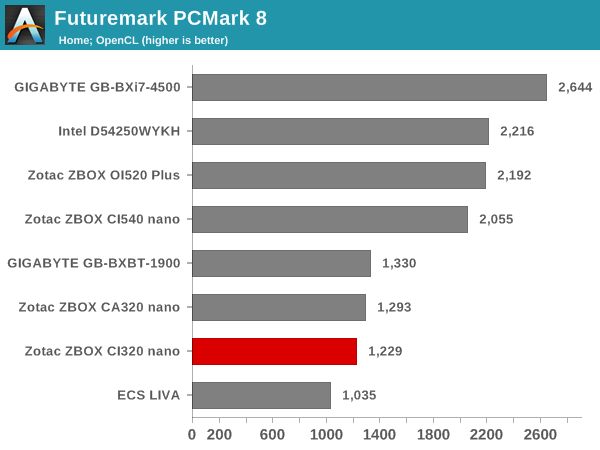
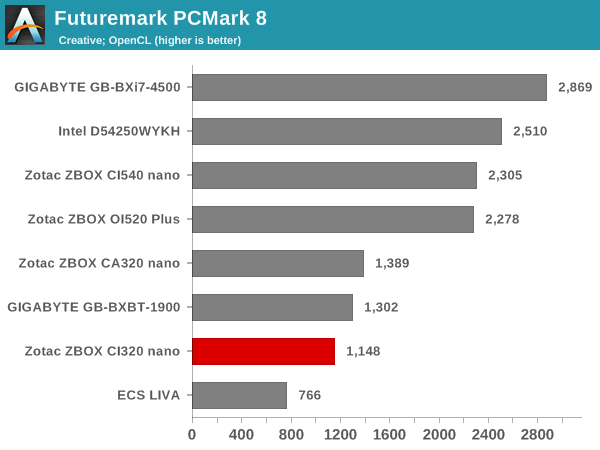
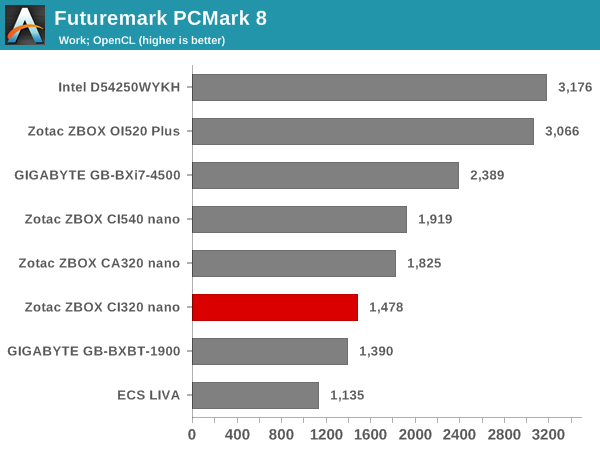
Miscellaneous Futuremark Benchmarks
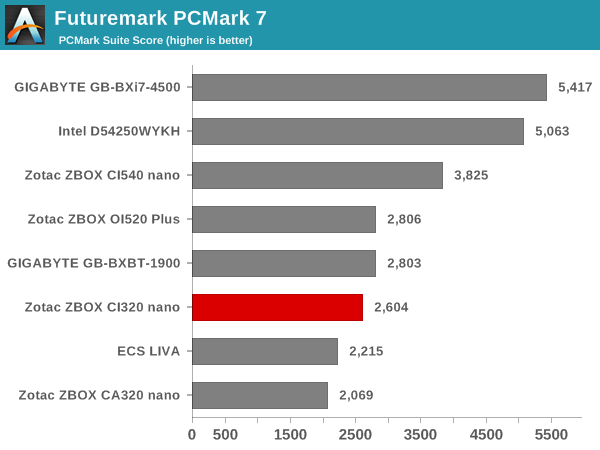
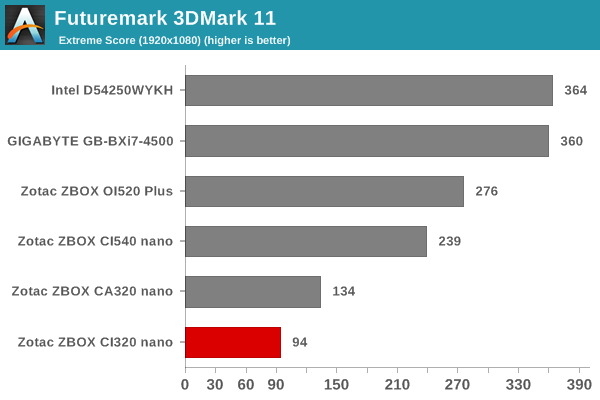
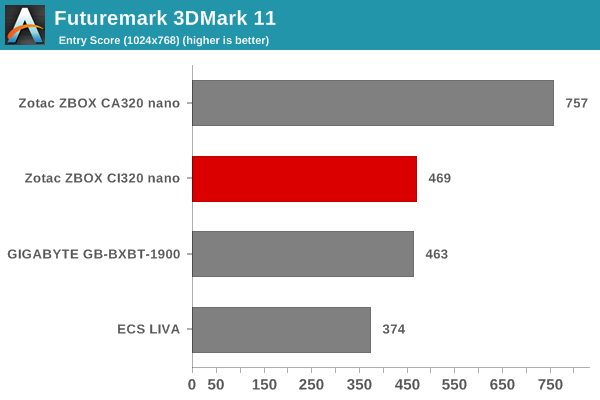
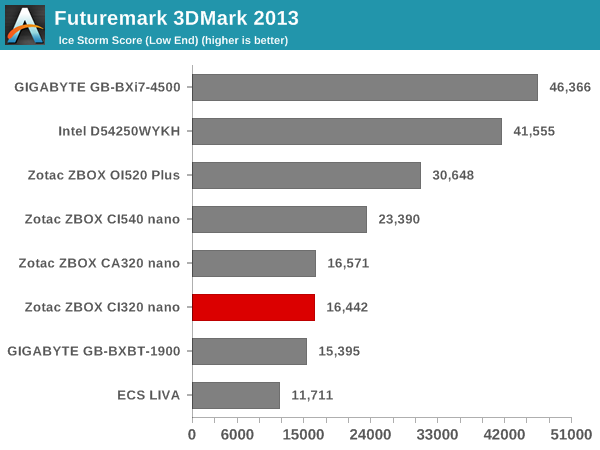
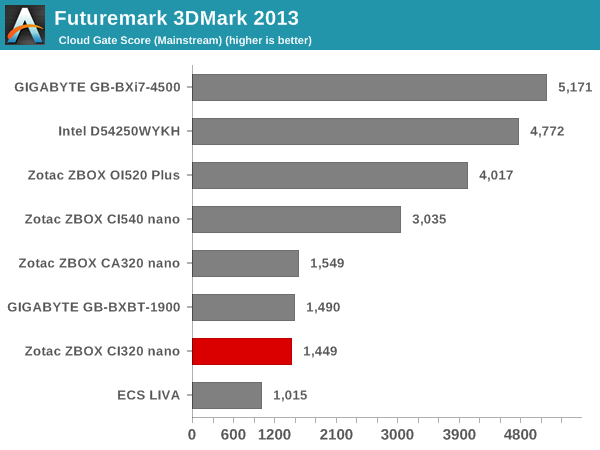
3D Rendering - CINEBENCH R15
We have moved on from R11.5 to R15 for 3D rendering evaluation. CINEBENCH R15 provides three benchmark modes - OpenGL, single threaded and multi-threaded. Evaluation of select PCs in all three modes provided us the following results.

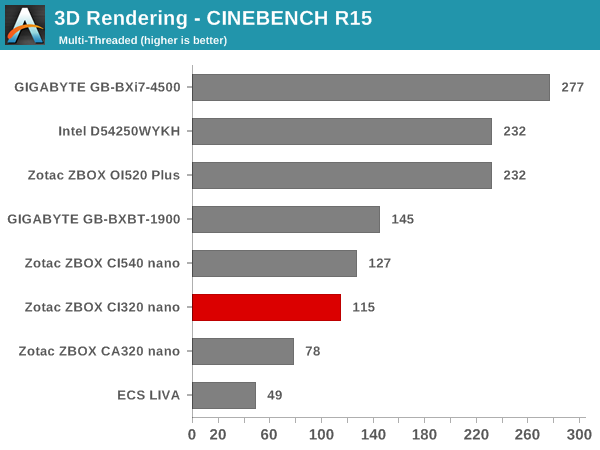
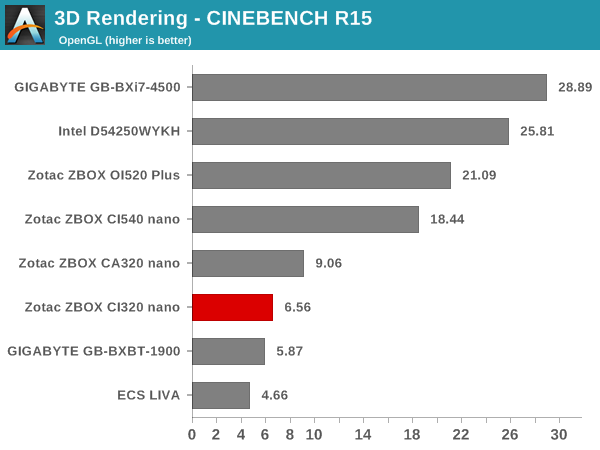
Benchmarks which rely on GPU performance are won by the AMD Temash-based ZBOX CA320 nano, while those relying on CPU performance (either single or multi-threaded) are won by the ZBOX CI320 nano. The ECS LIVA lags both of these, but it does come at a lower price point.










44 Comments
View All Comments
Pissedoffyouth - Tuesday, January 6, 2015 - link
I built me a mini itx the size of a bible recently, with a 65w AMD APU (A10-7800). With the L9a cooler unless under a heavy gaming load its inaudible. I recommend if your looking for a tiny PC for office work but also gaming go down that route as the performance is much better than these bay trail NUC's and similar cost.BackInAction - Tuesday, January 6, 2015 - link
What case/MB did you use?Pissedoffyouth - Wednesday, January 7, 2015 - link
Minibox m350 - the smallest case you can get. Motherboard was Asrock A88 itx - has msata which was a plus as I had no space for SSDThe_Assimilator - Tuesday, January 6, 2015 - link
Maybe the performance is much better *because it consumes 8 times more power*. And there is no way that you're not experiencing throttling, if indeed you have been foolish enough to cram an AMD APU into a bible-sized enclosure.Samus - Tuesday, January 6, 2015 - link
BRIX and NUC are still amazing. We're talking 4"x4" and power on-par with a mainstream desktop, here.That being said, ITX is the largest format I consider anymore. My Xeon E3-1231 workstation has an Asus H87 ITX board, 16GB RAM, 480GB SSD, 6TB HDD, 2TB 2.5" HDD, NVidia GTX970, 450-watt PSU and liquid cooling built in the Silverstone FT03-mini. Although it's aluminum it weighs quite a bit just because it's literally packed...not enough room inside to fit a balled-up fist.
But it's ultra-fast, 24/7 reliable and the size of a loaf of bread.
NUC/BRIX is mainstream fast, 24/7 reliable and the size of a sandwich.
Antronman - Saturday, January 10, 2015 - link
"Workstation build""H87"
"GTX970"
Just because you use a computer for work does not make it a workstation.
ITX isn't something everybody is interested in, because either they don't care about how much space their computer takes up or they need expansion room. Really, small form-factor PCs are a small niche. Otherwise you'd see a much larger variety in ITX boards, and a drive to make components much, much smaller.
As for the GTX 970, unless it has the MSI ITX variant, the card itself is the size of a sandwich.
StevoLincolnite - Monday, January 12, 2015 - link
Move over to Socket 2011, 64Gb+ Ram then you have a workstation.I laugh at your quad-core xeon and only 16Gb of Ram.
However, you can't get that much performance in ITX.
Pissedoffyouth - Wednesday, January 7, 2015 - link
It is throttling, but only under heavy gaming and I only game at 1280x1024 so it still works great. Day to day tasks never get the temps high at alljohnny_boy - Tuesday, January 6, 2015 - link
That must be an enormous bible you have in mind. Even at 45W, there is no way god damned hell you're getting an A8/10 series APU into a bible-sized enclosure.Samus - Tuesday, January 6, 2015 - link
He must be talking about those bibles that sit on a pedestal that weigh 30 lbs :)